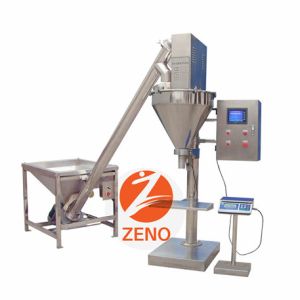What about the packaging materials ?Posted by zenofilling on August 5th, 2022  #Spisudehjemme (“eating out at home”) has become a popular hashtag in a time when bars, cafés and restaurants are fighting to survive COVID-19. Within a short period of time local eateries and famous gourmet restaurants have been forced to rethink their menus. They have developed new meals for takeaway in compliance with the current guidelines of the authorities. Many restaurants have probably vowed that their chefs will never prepare food for takeaway. Other eateries have realized that the generally growing demand for new meal solutions is driven not only by a practical need in the household, but by a growing hunger for new, identity-creating experiences. Takeaway is a megatrend, driven by increased focus on lifestyles and major, change-making agendas in society such as digitalization, health, aesthetics – and yes, sustainable lifestyles. Roughly speaking, within a few years, takeaway has gone from being loser food to becoming winner food. Especially this year, takeaway has proven to be more than an expression of laziness in the kitchen or self-indulgence on the dinner table. It has become a nice way to demonstrate good citizenship in the form of financial support to the restaurant industry in a difficult time due to COVID-19. I am convinced that there have also been gift cards for takeaway from a local café or a selected eatery under the Christmas tree in many homes as a kind of extra financial support package. It is my hope, at least. It appears that the purchase of groceries has been one of the few consistent activities outside the home that we have been able to plan during 2020 due to the many changing restrictions. As such, grocery shopping ranks over physical presence at work, socializing with family and friends as well as the use of public transport and going to the gym, according to a global consumer survey from McKinsey. This only confirms why an evening with takeaway food can feel like an extraordinary and almost festive event in an otherwise dark wintertime. But the food is one thing – the packaging in which it is packed is another. Unfortunately, there is no getting around that. The flip side of the coin is that you are left with a lot of unwanted packaging when the food has been eaten and the party is over, so to speak. This is not just a challenge here and now during COVID-19. Quite the contrary, it is a global challenge that the piles of waste in many countries are only growing bigger and bigger, day by day. This is a consequence of the fact that our living standard is improving over time, that population growth is increasing, cities are growing and the total consumption in the world is only going in one direction – upwards. Globally, the consumption of takeaway food is estimated to grow by 3-4 percent per year and the market is estimated to have a total value of more than DKK 600 billion. In the EU alone, it is estimated that more than 2000 million units of takeaway packaging is used annually – and the majority of those is only used once. Therefore, takeaway packaging accounts for a fair share of household waste, and the inadequate systems of many countries for reuse and recycling are unfortunately leading to increasing global pollution. Fortunately, there has been an increased awareness of this in recent years. Not least politically, because we need systemic change if we are to solve the global waste problems. We as consumers cannot solve this by ditching takeaway food alone. On the other hand, we can all consider whether there is packaging that we can completely do without, because packaging should be used only when necessary. And when the need for packaging arises, we must ensure that it can at least be sorted correctly so that the material can be recycled, if the packaging itself cannot be reused. At Powder packing machine supplier, we are engaged in several value chain collaborations, which focus on creating increased transparency and knowledge about the sustainability and circularity of different packaging types and materials. This applies to resource consumption, production, transport as well as to the possibility of recycling and reuse. The purpose is to reduce waste and thereby also CO2 emissions. Imagine if the packaging was sold as a service per se rather than a product that comes with the takeaway. This way, the packaging would solve a specific task by flour packing machine manufacturer– to transport the food safely from one place to another without becoming waste after a single journey. Such a model requires that we as consumers are prepared to enter new relationships or cooperate with the takeaway supplier, and perhaps a third party who is responsible for the collection and cleaning of the packaging. It is possible, but neither easy nor cheap. The question is whether we as consumers are ready for the challenge. Either way, we need to take a critical look at the very business model of takeaway as we know it today. Like it? Share it!More by this author |


